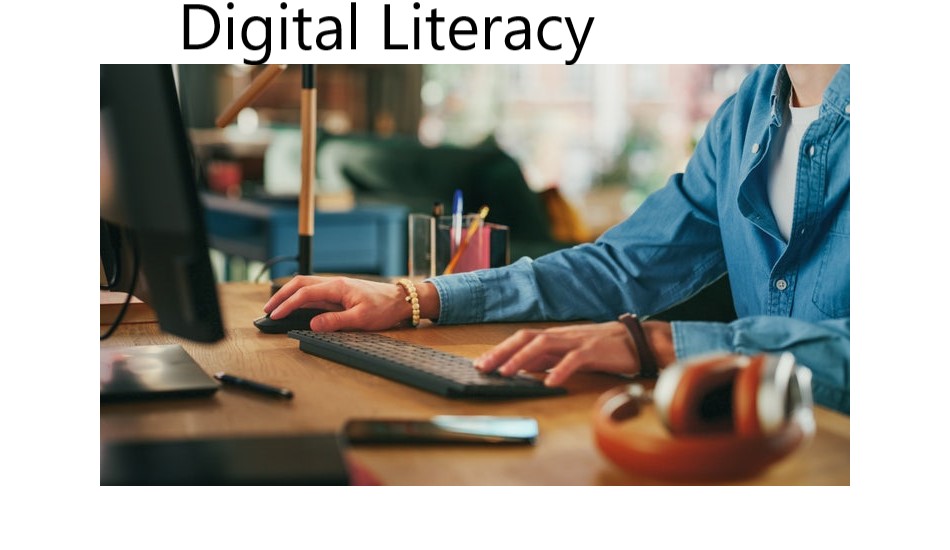Introduction
Digital literacy initiatives have become increasingly important today, and Pakistan is no exception. With a growing digital divide in the country, efforts are being made to bridge this gap and ensure everyone has access to the tools and resources they need to succeed in today’s digital age. In this context, several digital literacy initiatives have been launched throughout Pakistan to provide people with the skills and knowledge they need to use technology effectively. These initiatives aim to empower individuals and communities and equip them with the skills and tools they need to succeed in today’s fast-paced and ever-changing digital landscape.
Soon, the digital divide will not be between the haves and the have-nots. It will be between the know-hows and the non-know-hows ~Howard Rheingold.
The Importance of Digital Literacy in Pakistan:
Digital literacy is crucial in Pakistan as it can significantly impact economic growth and development. With the majority of the population under 30, there is a need to equip the youth with the necessary digital skills required in today’s job market. Moreover, digital literacy initiatives can help bridge the gap between rural and urban areas regarding access to information and resources. By providing digital literacy skills to people in remote areas, they can access vital services such as healthcare, education, and financial services that were previously out of reach. Overall, digital literacy initiatives can play a significant role in empowering the people of Pakistan and bridging the technology divide in the country.
Current State of Tech Divide in Pakistan
Digital literacy initiatives are crucial to bridge the widening technology divide in Pakistan. The country faces significant challenges in access to technology and digital resources, with only 35% of the population accessing the internet. This gap is even more pronounced in rural areas, where access to digital resources is limited. Furthermore, the population needs more digital literacy skills, which is hindering the country’s economic growth and development. Therefore, it is imperative to prioritize digital literacy initiatives throughout the country. By bridging this technology divide, we can ensure everyone has access to the tools and resources needed to succeed in today’s fast-paced and ever-changing digital landscape.
Government Initiatives to Promote Digital Literacy:
The government of Pakistan has launched several initiatives to promote digital literacy in the country. One such initiative is the “Digital Pakistan” campaign, which aims to transform Pakistan into a digitally empowered nation. The campaign includes several projects, such as establishing technology parks, distributing laptops among students, and providing free Wi-Fi in public places. Another initiative is the “Prime Minister’s Laptop Scheme,” which aims to provide laptops to students in higher education institutions nationwide. Furthermore, the government has also launched several training programs to enhance digital literacy skills among the population. These initiatives are crucial in bridging the technology divide in Pakistan and empowering people with the necessary skills and resources to succeed in today’s digital age.
Non-Governmental Organizations and Digital Literacy Programs:
Several non-governmental organizations (NGOs) also actively promote digital literacy in Pakistan. One such organization is the Digital Rights Foundation (DRF). It aims to protect digital rights and promote digital literacy among different communities. Another organization is the Pakistan Telecommunication Company Limited (PTCL), which has launched a digital literacy program. Moreover, private companies such as Telenor and Jazz have also launched digital literacy initiatives to promote access to digital resources and enhance digital skills among the population. The collective efforts of NGOs and private companies are crucial in bridging the technology divide in Pakistan. They are ensuring that everyone has access to the tools and resources they need to succeed in today’s digital age.
Bridging the technology divide in Pakistan poses several challenges and obstacles:
- One of the most significant challenges is the lack of infrastructure and resources in remote and underprivileged areas. This results in limited access to digital resources and hinders the growth of digital literacy initiatives in these areas.
- In addition, there is a lack of awareness and understanding of the importance of digital literacy among the population. It make difficult to promote and implement digital literacy programs effectively.
- Another challenge is the language barrier, where a significant portion of the population is not proficient in English. This makes it challenging for them to access and utilize digital resources effectively.
- Finally, there is a need for continuous funding and support for digital literacy initiatives. It ensure their sustainability and long-term impact. Overcoming these challenges and obstacles is crucial in bridging the technology divide in Pakistan. It ensures that everyone has access to the tools and resources they need to succeed in today’s digital age.
Success Stories of Digital Literacy Programs in Pakistan:
There have been several success stories of digital literacy programs in Pakistan that have helped bridge the technology divide in the country. The following are a few examples:
Challenges and Obstacles in Bridging the Tech Divide:
- Telenor Digital Birth Registration: Telenor, a private telecommunications company, launched a digital literacy initiative in collaboration with the government of Pakistan to promote birth registration among the population. The industry uses mobile technology to register births and provide digital literacy skills to people in remote areas. This program was a massive success, with over 1.5 million births reported using the digital platform.
- Digital Skills for Girls: The Digital Skills for Girls program was launched by the Pakistan Telecommunication Authority (PTA). It promote digital literacy skills among girls in the country. The program provided training on coding, programming, and other digital skills to girls from underprivileged backgrounds. The initiative was a huge success, with over 5,000 girls trained in digital skills.
- Jazz Smart Schools: Jazz, a private telecommunications company, launched the Jazz Smart Schools program. It provides digital literacy skills to students in public schools nationwide. The program provided students with tablets, e-learning software, and teacher training to enhance their digital skills. The initiative has been a massive success, with over 50,000 students and 1,000 teachers benefiting from the program.
- Digital Empowerment Foundation: The Digital Empowerment Foundation is an NGO actively promoting digital literacy skills among marginalized communities in Pakistan. The foundation provides training on digital skills, e-commerce, and online marketing to women and youth from underprivileged backgrounds. The program has succeeded, with over 500 women and youth trained in digital skills.
Overall, these success stories demonstrate the impact of digital literacy programs in bridging the technology divide in Pakistan. These initiatives have empowered individuals and communities It may provide access to vital services and resources, and enhanced the country’s economic growth and development.

Future Prospects and Trends in Digital Literacy:
As technology advances rapidly, the importance of digital literacy will only continue to grow. In Pakistan, the government and private organizations are taking steps to bridge the technology divide and promote digital literacy among the population. Looking ahead, there are several trends and prospects for digital literacy in Pakistan:
- Increasing Access to Technology: With the expansion of Internet infrastructure and the availability of affordable smartphones, access to technology is expected to increase in the coming years. This will provide more opportunities for people to learn digital skills and access digital resources.
- Emphasis on STEM Education: Science, Technology, Engineering, and Mathematics (STEM) education is becoming increasingly important in today’s job market. There will be a greater emphasis on STEM education in schools and universities to prepare the youth for the future.
- Focus on Cybersecurity: As more people use digital resources, the need for cybersecurity will become more critical. There will be a greater emphasis on educating people on protecting themselves from cyber threats and promoting safe online behaviour.
- Rise of E-Learning: With the COVID-19 pandemic, e-learning in Pakistan has become more popular than ever. This trend is expected to continue, and more people will take advantage of online courses and resources to enhance their digital skills.
Overall, digital literacy initiatives will continue to play a significant role in bridging the technology divide and empowering people in Pakistan. By providing access to digital resources and promoting digital skills, we can ensure everyone has the tools they need to succeed in the digital age.
Conclusion
In conclusion, digital literacy initiatives are crucial in bridging Pakistan’s technology divide. With the majority of the population under 30, there is a need to equip the youth with the digital skills required in today’s job market. The government of Pakistan and several non-governmental organizations and private companies have launched several initiatives to promote digital literacy and provide access to digital resources to people across the country. However, several challenges and obstacles, such as the lack of infrastructure and resources in remote areas and the lack of awareness and understanding of the importance of digital literacy, need to be addressed to ensure that everyone has access to the tools and resources they need to succeed in today’s fast-paced and ever-changing digital landscape. By bridging this technology divide, we can empower individuals and communities and contribute to Pakistan’s economic growth and development.
Memoona Israr, an intern at Perspective.pk, writes this article.


